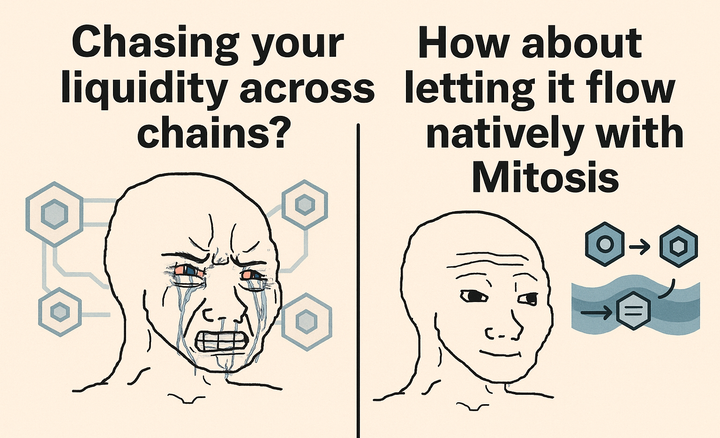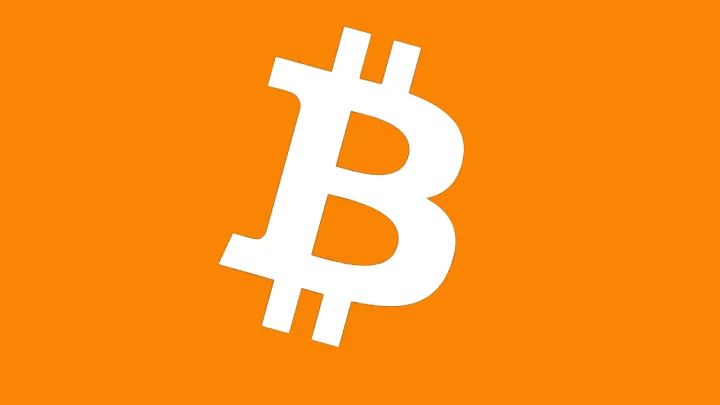The Value of Mitosis Blockchain for Token Holders

Dear Readers,
Today, I want to share insights about the Mitosis blockchain in a two-part series. These articles aim to clarify the value of the Mitosis L1 blockchain for two distinct groups: token holders and users. These are two very different perspectives, each vital to understanding the potential of the $MITO token and the blockchain itself.
For this first article, let’s focus on token holders and explore what it means to own $MITO. Far too often, I hear the question: “Wen TGE?” But this is the wrong question. The real question is “How?” Because launching a token without value is like building a house on sand—it simply won’t stand the test of time. Meme coins may be a counterexample, but their value dynamics are a topic for another blog.
In this article, we’ll tackle three key areas:
- What is a token, and what does it represent? To explain, we’ll draw a comparison with shares in traditional finance.
- What gives shares their value in a company, and how does that apply to tokens?
- How can Mitosis leverage its technology and strategy to ensure a strong-performing token?
Ready? Let’s dive in.
What is a Token?
A Parallel with Shares in Traditional Finance
In blockchain ecosystems, tokens often serve as a unit of value or utility within their network. While they can share similarities with traditional financial shares, their roles and mechanisms differ significantly. Here are some key attributes tokens can have:
- Governance Rights Token holders may participate in voting on critical decisions about the project's direction, such as upgrades, funding allocations, or protocol changes. However, unlike shares in traditional finance, governance rights typically do not translate to legal ownership or profit entitlement.
- Speculative Value Tokens can gain value as demand increases, driven by adoption, utility, or perceived future potential. However, token release schedules (often called “liberations”) can introduce selling pressure into the market. This makes careful tokenomics design crucial to balance supply, demand, and long-term sustainability.
- Utility In many blockchain networks, tokens are essential for performing transactions (e.g., paying gas fees in ETH or SOL), accessing specific features, or staking to secure the network. The more active the network, the more critical this utility becomes, driving demand for the token.
- Dividends or Rewards Certain tokens offer holders the potential to earn returns, such as staking rewards, fee redistributions, or other mechanisms. These can act as an incentive for holding the token and participating in the network’s ecosystem.
It’s essential to note that not all tokens possess all these characteristics. The role and design of a token depend on how the project envisions its token’s purpose within its ecosystem. The value of a token is therefore closely tied to the success, usability, and adoption of its blockchain—but is this always the case?
What Gives Shares Their Value?
To understand what could give Mitosis tokens value, let’s first examine what makes shares valuable in traditional companies:
1. Profitability and Earnings
The primary driver of a share’s value is the company’s ability to generate profits. Investors analyze earnings reports, revenue growth, and profit margins to estimate a company’s worth. A common metric is the Price-to-Earnings (P/E) ratio, which compares a company’s share price to its earnings per share (EPS). A P/E ratio above 50 often indicates overvaluation driven by speculation.
2. Market Perception
A company’s reputation, competitive positioning, and management team heavily influence its share price. Public sentiment can drive speculative valuations, so a company’s “health” is crucial.
3. Dividends
Some companies distribute profits to shareholders in the form of dividends. However, this requires the company to be profitable. Without profits, there are no dividends—period.
4. Growth Potential
Companies that reinvest their earnings into development or acquisitions increase their potential for future growth, enhancing the fundamental value of their shares.
5. Scarcity of Shares
A limited supply of shares, coupled with strong demand, can significantly increase their price. Companies like Apple often buy back shares to reduce supply, boosting scarcity and driving up share value.
In summary, one key factor ties these elements together: profitability is essential. The way a company invests its profits depends on its growth stage and strategic priorities:
- For young or smaller companies, reinvesting profits into growth—such as research, development, and market expansion—is the most effective strategy. This builds long-term value.
- As companies mature and achieve stable profitability, buying back shares becomes a powerful way to increase scarcity and boost share value.
- Finally, when a company has exhausted opportunities for reinvestment or share buybacks, distributing dividends becomes the logical choice to reward shareholders.
Each stage represents a strategic use of profits to maximize value for stakeholders. The question now becomes: how can these principles apply to $MITO tokens, and how can Mitosis leverage them to create long-term value? Let’s explore this in the next section.
What Gives $MITO Token Value?
Governance alone doesn’t create value for a token. While a decentralized autonomous organization (DAO) is a nice feature, it’s not enough to justify a token’s existence. A token must have utility, growth potential, and mechanisms that reflect the health and success of its underlying ecosystem.
1. Utility
As an L1 blockchain, $MITO has inherent utility. Users need it to pay transaction fees and maybe stake to secure the network. This creates a virtuous cycle: the more users and developers on the chain, the greater the demand for $MITO tokens. However, utility alone isn’t enough.
2. Growth Potential and Investments
Mitosis has taken a smart step by allocating 25% of its token supply to incentivize builders and developers (as outlined in their Evolve Builders Program). This is a long-term investment to attract projects, increase adoption, and grow the ecosystem.
Strategic partnerships and collaborations can also accelerate this growth. By aligning with projects and platforms, Mitosis can expand its network and create new revenue opportunities.
3. Scarcity and Burn Mechanisms
Stability protocols and fee-switch mechanisms are popular in crypto, but their effectiveness depends on timing. In traditional finance, companies buy back shares only after achieving profitability. Similarly, Mitosis could introduce a burn mechanism once the blockchain reaches maturity and generates consistent revenue. This approach would reduce token supply over time, enhancing scarcity and value.
Conclusion
A token, like a share, derives its value from the health and success of its ecosystem. For Mitosis, the key lies in onboarding developers, fostering adoption, and ensuring the blockchain is easy to use and rewarding for its participants.
The question isn’t “When will $MITO launch?” but rather, “What can Mitosis bring to its users, developers, and community?” The community is here, but the users are yet to come. In my next blog, I’ll explore what Mitosis L1 offers to users and why they should adopt it.
Until then, take care!



Comments ()